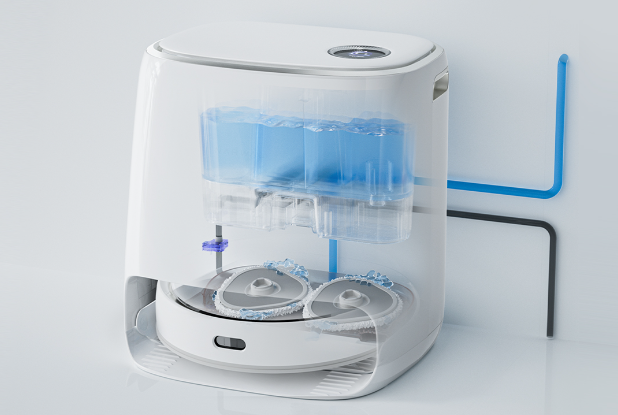Water conservation has become an essential concern in today’s world. With growing awareness of environmental issues, finding ways to save water is a priority. One effective solution is the use of a mopping robot. These innovative devices not only save water but also contribute to reducing the environmental impact of traditional cleaning methods.
Efficient Water Usage
Traditional mopping methods often use a significant amount of water. Whether it’s filling up a bucket or rinsing a mop repeatedly, water consumption can add up quickly. A mopping robot, on the other hand, is designed to use water more efficiently.
Mopping robots are programmed to dispense only the necessary amount of water required to clean the floor. This precision helps reduce water waste compared to manual mopping. By using just enough water for effective cleaning, these robots ensure that every drop counts, making them a more eco-friendly option.
Automated Cleaning with Less Waste
One of the primary benefits of a mopping robot is its ability to automate the cleaning process while minimizing waste. Unlike traditional mopping, which often involves rinsing the mop multiple times in the same dirty water, a mopping robot uses clean water throughout the cleaning cycle.
This system not only saves water but also ensures that the floors are cleaned more effectively. The robot’s built-in technology allows it to switch to clean water after each cycle, preventing the re-spreading of dirt and grime. This automated approach results in a more efficient use of resources, including water.
Reducing Chemical Use
Another way mopping robots help reduce environmental impact is by minimizing the need for cleaning chemicals. Traditional mopping often relies on harsh chemical cleaners to remove stains and dirt. However, a mopping robot is designed to clean efficiently with little to no chemical assistance.
The precise water control, combined with the robot’s scrubbing technology, means that many surfaces can be cleaned without harsh chemicals. This not only reduces the amount of harmful substances entering the water supply but also lessens the overall environmental footprint of the cleaning process.
Energy Efficiency
In addition to conserving water, a mopping robot is designed to be energy-efficient. The energy used by the robot is minimal compared to the resources consumed by other cleaning methods. By operating on a scheduled cleaning cycle, the robot ensures that energy is used only when necessary.
Many mopping robots are designed to automatically return to their charging docks once their cleaning cycle is complete. This smart use of energy ensures that the robot conserves power when not in use, further reducing its environmental impact.
Long-Term Sustainability
Mopping robots are built to last, reducing the need for frequent replacements of cleaning equipment. Traditional mops and buckets often wear out over time and need to be replaced. By investing in a durable mopping robot, homeowners contribute to reducing waste in the long run.
The materials used in mopping robots are designed for extended use, minimizing the need for disposable cleaning products. This durability adds to their sustainability, as fewer resources are used in the production and disposal of cleaning tools.
Less Water Pollution
By reducing the need for chemical cleaners and using water more efficiently, mopping robots contribute to lowering water pollution. When fewer chemicals are washed down the drain, it results in less contamination of local water sources. This is especially important in areas where water treatment facilities may struggle to filter out harmful substances.
A mopping robot also helps prevent the overuse of water, ensuring that it is conserved and not wasted during the cleaning process. This reduction in water waste contributes to the broader goal of preserving our planet’s vital resources.
Sustainable Cleaning Solution
A mopping robot offers a sustainable solution for keeping homes clean while reducing the environmental impact. By conserving water, minimizing chemical use, and promoting energy efficiency, these robots represent a step forward in eco-friendly cleaning technologies.
As more people become conscious of their environmental footprint, choosing a mopping robot can make a significant difference. It not only helps homeowners save water but also aligns with global efforts to protect the environment.
Conclusion
Mopping robots provide a smart and sustainable approach to cleaning. They use water efficiently, reduce chemical use, and are energy-efficient, making them a great option for eco-conscious consumers. By choosing a mopping robot, you can take a step toward conserving water and reducing your environmental impact while keeping your home clean and fresh.











